How to Choose the Right Software Architecture Pattern?

Rathinakumar // 22-12-2023
What is Software Architecture
Software architecture is the foundational structure and design blueprint of a software system, serving as a pivotal element in the development process. It encompasses the organization of components, their interactions, and system constraints, influencing crucial aspects like scalability, performance, maintainability, and security. Choosing the right architecture pattern in software engineering is paramount for project success, demanding careful evaluation based on specific use case requirements and constraints.
The selection process involves weighing various architecture types, each with unique strengths and weaknesses. Notably, the significance of software architecture pattern lies in its potential to determine a project’s success or failure. Poorly designed architectures lead to high maintenance costs, scalability challenges, and increased failure susceptibility. It’s crucial to recognize that the latest or most popular technology may not always yield optimal results, necessitating consideration of factors such as cost and ease of use. In essence, software architecture is the cornerstone that dictates the project’s trajectory, demanding thoughtful deliberation and careful selection before laying the foundation stone.
Software development architecture emerges as the guiding force, directing the trajectory of projects. This blog embarks on an enlightening expedition through the intricacies of architectural design patterns in software engineering, unraveling its profound significance in the custom software development process. From establishing the foundational structure to discerning the optimal architecture pattern, each decision resonates across the entire lifespan of a project.
Importance of Software Architecture
Strong Development
A well-designed architecture ensures that the software meets the specified requirements and user expectations. It provides a solid foundation for the software development company to build upon, leading to a more robust and reliable system. Quality in software architecture also facilitates scalability, maintainability, and adaptability over time.
Improve Accuracy
A thoughtfully designed architectural pattern in software engineering helps in identifying potential issues early in the development process. By breaking down the system into modular components with well-defined interfaces, architects can isolate and address errors in specific modules without affecting the entire system. This proactive approach reduces the likelihood of errors in the final product and streamlines the debugging process, saving time and resources.
Streamline Progress
A well-structured software architecture design pattern promotes the reusability of components, modular development, and parallel work on different modules. This accelerates the development process by enabling teams to work concurrently on different parts of the system. Additionally, clear software development architectural patterns provide a roadmap for developers, reducing the time spent on decision-making and problem-solving during the development lifecycle. This efficiency is crucial for meeting deadlines and responding quickly to changes in requirements or market conditions.
Types of Software Architecture Patterns
Layered Architecture Pattern
The layered architecture in software engineering is a fundamental design approach in software development, organizing a system into well-defined layers, each catering to specific functionalities. This hierarchical arrangement enhances modularity, maintainability, and scalability. At the top is the presentation layer, responsible for user interface and interaction. Below it, the business logic layer encapsulates the core application logic, implementing rules and processing data. The foundation is the data storage layer, managing data storage and retrieval.
This layered architecture design pattern in software engineering facilitates a clear separation of concerns, enabling independent development and modification of each layer. Communication primarily occurs vertically between adjacent layers, fostering a structured and comprehensible design. The layered architecture pattern is versatile, and employed in a spectrum of applications, from small-scale projects to complex enterprise systems. Its advantages include modularity for easier maintenance, scalability through independent layer scaling, and the potential for code reuse, making it a widely adopted and effective design paradigm in software engineering.
Applications:
- Layers promote modularity, making it easier to understand, modify, and maintain specific components.
- The separation of concerns facilitates scalability, allowing individual layers to be scaled independently.
- Components within each layer can be reused across the application or in different projects.
- Layers can be replaced or updated without affecting the entire system.
Drawbacks:
- The communication between layers may introduce overhead, impacting performance.
- Strict layering can lead to rigidity, making it challenging to accommodate changes that don’t align with the predefined layers.
- In large systems, managing multiple layers can introduce complexity, potentially complicating debugging and maintenance efforts.
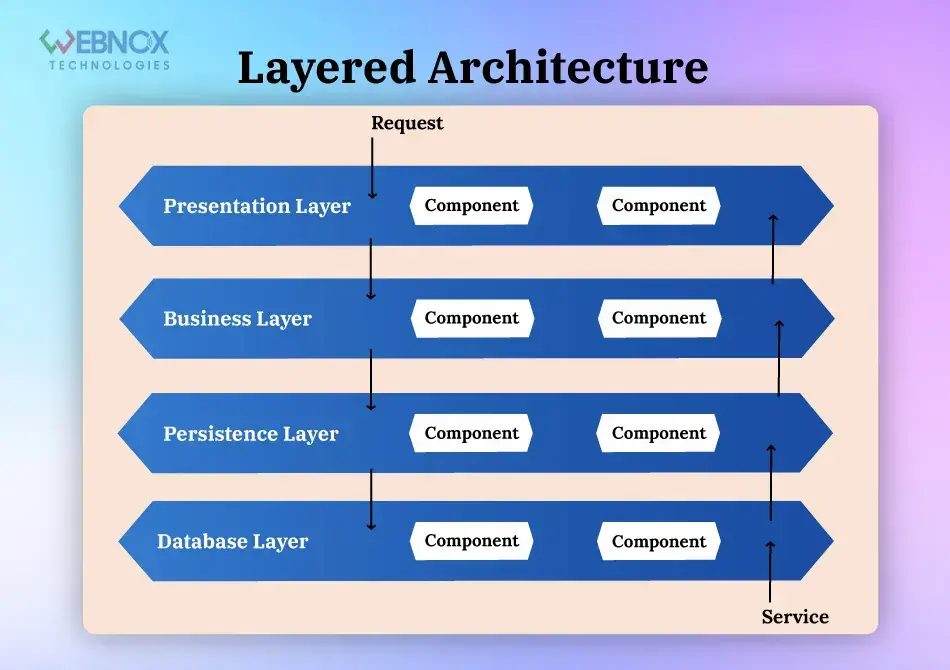
Event-Driven Architecture Pattern
Event-driven architecture (EDA) is a dynamic and scalable software architecture design pattern that centers on the generation, detection, and handling of events within a system. Events, representing significant occurrences or state changes, become the driving force behind the system’s operation. In an event-driven architecture, components communicate asynchronously through events, allowing for loose coupling and flexibility in the system’s structure.
This architectural pattern in software engineering is particularly adept at handling real-time scenarios, where immediate responses to events are crucial. It enhances scalability by distributing components and processing load based on the occurrence of events. The modularity inherent in event-driven systems makes development, testing, and maintenance more manageable.
Event-driven architecture finds applications in various domains, from responsive user interfaces to complex distributed systems, providing a framework that adapts well to changing conditions and requirements.
Applications:
- EDA facilitates scalable systems by enabling the distribution of components and processing load based on events.
- Components are loosely coupled, enhancing flexibility and making it easier to modify or replace individual elements.
- Immediate responses to events enable real-time processing, crucial for applications requiring quick reactions to changing conditions.
- Event-driven systems are often modular, promoting easier development, testing, and maintenance.
Drawbacks:
- Event-driven systems can be more complex, requiring careful design and management of event flows.
- Asynchronous event handling can pose challenges in debugging and tracing the flow of the application.
- Event processing may introduce overhead, impacting performance in scenarios with high event rates.
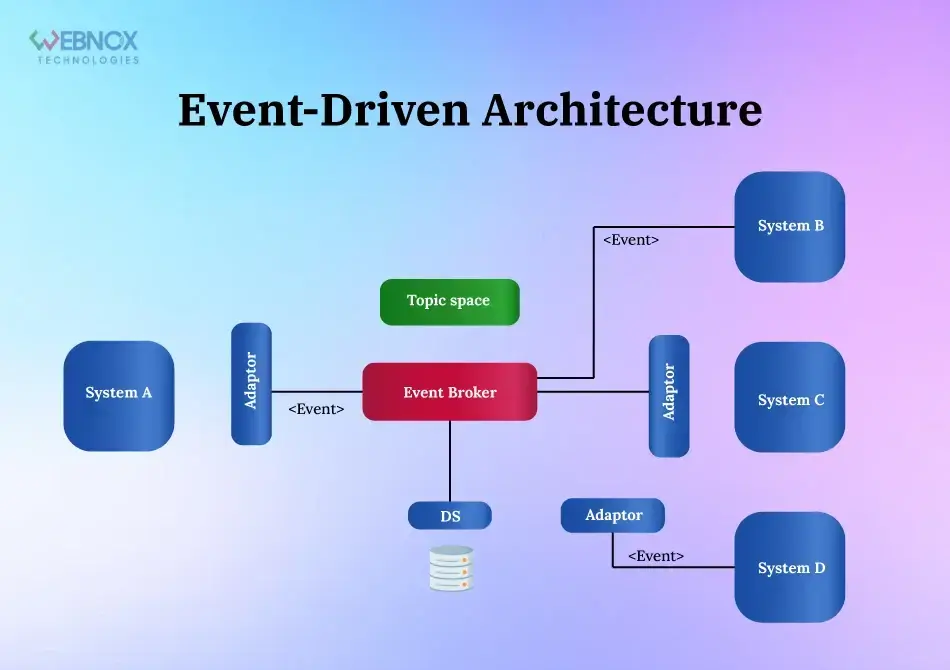
Microservices Architecture Pattern
Microservices architecture is a modern and highly scalable software design paradigm that structures an application as a set of independently deployable services. In this approach, each service, or microservice, is designed to perform a specific business function and communicate with others through well-defined APIs. Unlike monolithic architectures, microservices enable greater flexibility, allowing teams to independently develop, deploy, and scale services, leading to faster release cycles and enhanced agility.
This pattern facilitates improved scalability as individual microservices can be scaled independently based on demand. It encourages technological diversity, enabling the use of different technologies for different services. Fault isolation is a key benefit, as the failure of one microservice does not necessarily impact the entire system. However, the implementation of microservices introduces challenges such as increased complexity, the need for effective communication mechanisms, and careful management of data consistency across services. Despite these challenges, the microservices architecture has gained popularity for its ability to support large-scale and dynamic applications efficiently.
Applications:
- Microservices can be independently scaled, allowing efficient resource allocation based on demand.
- Independent deployment of microservices enables rapid development, testing, and release cycles.
- Different microservices can use varied technologies, fostering innovation and adaptability.
- A failure in one microservice does not necessarily affect the entire system.
Drawbacks:
- Managing a multitude of microservices requires robust orchestration and communication mechanisms.
- Communication between microservices introduces challenges such as network latency and potential points of failure.
- Maintaining data consistency across microservices can be complex, requiring careful design.
- Implementing a microservices architecture involves an initial learning curve and development overhead.
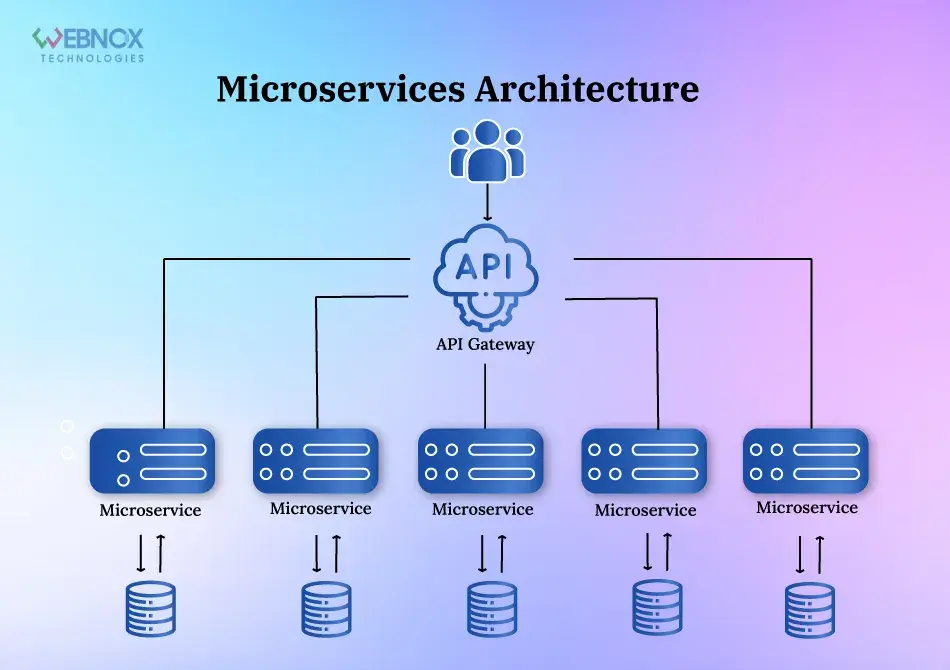
Microkernel Architecture Pattern
Microkernel architecture pattern, also known as the plugin architecture, is a software design pattern that aims to minimize the core functionality of a system and delegate other functionalities as separate modules or plugins. The microkernel, or core, provides essential services like process communication, while additional features are implemented as independent modules that can be dynamically loaded or unloaded. This approach promotes simplicity, flexibility, and extensibility in software systems.
In a microkernel architecture, the core focuses on fundamental operations, leaving non-essential services to external modules. This design pattern is often employed in operating systems and application frameworks where customization and scalability are crucial. While it offers advantages such as easier system maintenance, extensibility, and the ability to adapt to changing requirements, the implementation of microkernel architectures may introduce complexities related to communication between modules and potential performance overhead.
Applications:
- The separation of core services and modules promotes a modular design, enhancing maintainability and extensibility.
- Dynamically loading and unloading modules provides flexibility, enabling the system to adapt to changing requirements without affecting core functionality.
- Users can customize the system by selecting and incorporating only the necessary modules, reducing unnecessary complexity and resource usage.
- The modular nature supports scalability, allowing the addition or upgrading of features independently.
Drawbacks:
- Interactions between modules and the microkernel may introduce communication overhead.
- Effective communication mechanisms between modules and the microkernel can increase overall system complexity.
- Depending on the implementation, modules may introduce performance overhead.
- Developers may face a learning curve when working with the intricacies of microkernel architecture.
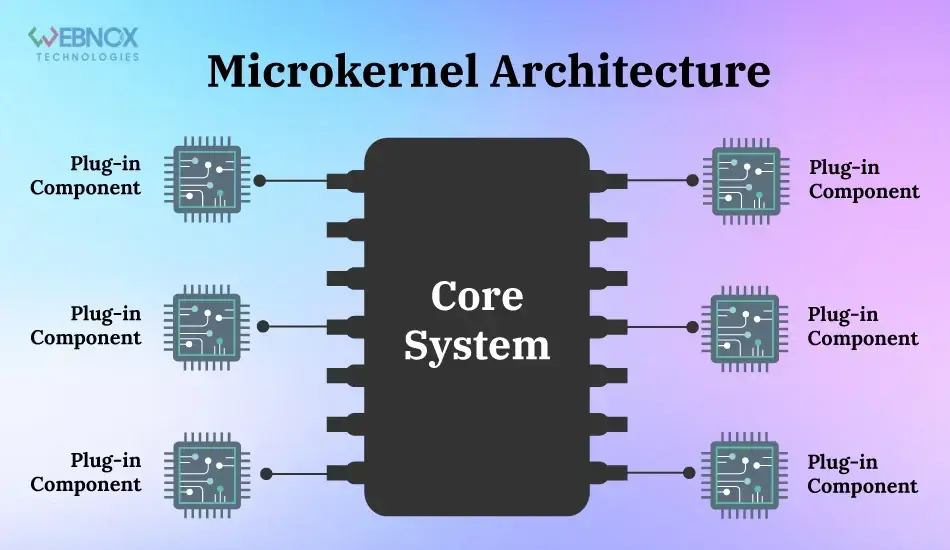
Client-Server Pattern
The client-server pattern in software engineering is a foundational architectural model where computing tasks are distributed between a client, the end-user interface or application, and a server responsible for managing resources, data, and business logic. Communication occurs through well-defined protocols, often over a network, allowing clients to request services or resources from the server. This pattern enables a clear separation of concerns, with clients focusing on delivering a user-friendly interface and servers handling data storage and processing.
This architecture promotes scalability, as additional clients can be easily accommodated without impacting the server’s core functionality. Centralized data management ensures consistency, while resource optimization allows clients to be lightweight. However, the client-server pattern introduces challenges such as a single point of failure with the server, potential bottlenecks in network communication, and a dependency on network quality for performance. Despite these challenges, the client-server pattern remains a prevalent and effective model for various applications, from web-based services to enterprise systems.
Applications:
- Easily scalable as clients can be added without affecting the server’s core functionality
- Centralized data storage and management on the server ensure consistency and integrity.
- Clients can be lightweight, focusing on user interfaces, while the server handles resource-intensive tasks.
- Updates and modifications can be centralized on the server, simplifying maintenance.
- DrawbEasily scalable as clients can be added without affecting the server’s core functionality.
- Centralized data storage and management on the server ensure consistency and integrity.
- Clients can be lightweight, focusing on user interfaces, while the server handles resource-intensive tasks.
- Updates and modifications can be centralized on the server, simplifying maintenance.
Drawbacks:
- The server represents a single point of failure; if it goes down, clients may lose access to services.
- Intensive client-server communication can lead to network bottlenecks.
- Performance is dependent on network quality; slow or unreliable connections may impact user experience.
- Configuring and maintaining the server infrastructure can introduce initial setup complexities. acks:
- The server represents a single point of failure; if it goes down, clients may lose access to services.
- Intensive client-server communication can lead to network bottlenecks.
- Performance is dependent on network quality; slow or unreliable connections may impact user experience.
- Configuring and maintaining the server infrastructure can introduce initial setup complexities.
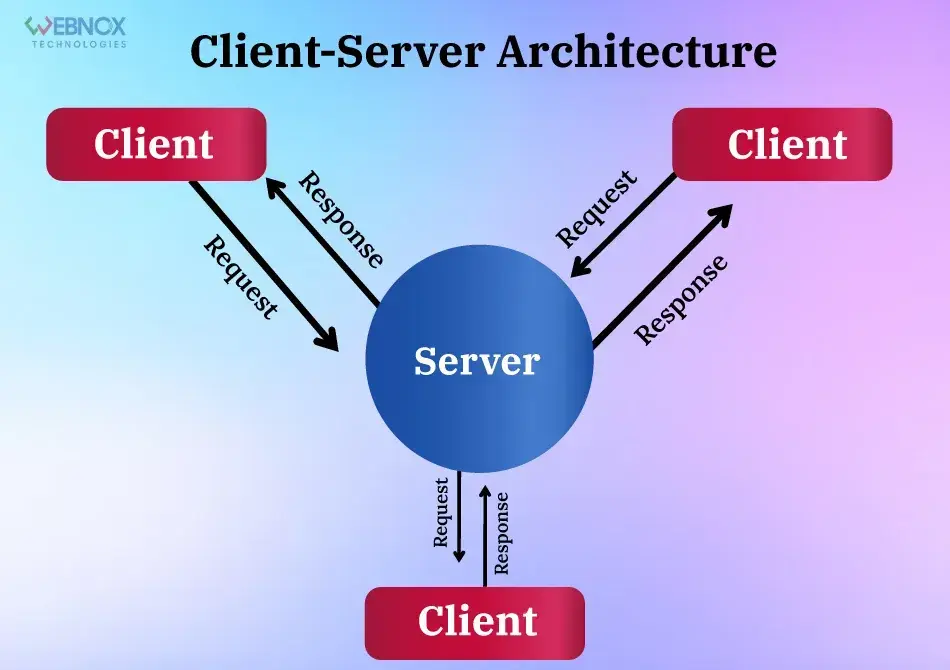
Conclusion
In summary, software architecture serves as the foundational blueprint for successful development projects, influencing scalability, maintainability, and adaptability. Its significance lies in providing a solid structure for the development team, fostering strong development, improving accuracy, and streamlining progress.
Choosing the right architecture pattern in software engineering requires careful consideration of project requirements. While each pattern has strengths, it is crucial to recognize potential drawbacks. Thoughtful decision-making in software architecture is imperative for project success. Developers must navigate the dynamic field with adaptability and strategic planning, recognizing the profound impact architecture has on the success and resilience of software solutions. Ready to architect success for your project? Select the best software architecture pattern wisely and maximize your software’s capabilities!




